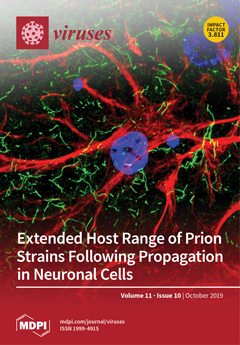Open AccessCommunication
A Novel Enzootic Nasal Tumor Virus Circulating in Goats from Southern China
by
Shao-Lun Zhai, Dian-Hong Lv, Zhi-Hong Xu, Jie-Shi Yu, Xiao-Hui Wen, He Zhang, Qin-Ling Chen, Chun-Ling Jia, Xiu-Rong Zhou, Qi Zhai, Feng Li, Patrick C. Y. Woo, Susanna K. P. Lau, Dan Wang and Wen-Kang Wei
Cited by 6 | Viewed by 3931
Abstract
Enzootic nasal tumor virus (ENTV) has two types, ENTV-1 in sheep and ENTV-2 in goats, respectively. In China, the incidence of ENTV-2 related diseases has increased year by year. In this study, we reported an outbreak of ENTV-2 in a commercial goat farm
[...] Read more.
Enzootic nasal tumor virus (ENTV) has two types, ENTV-1 in sheep and ENTV-2 in goats, respectively. In China, the incidence of ENTV-2 related diseases has increased year by year. In this study, we reported an outbreak of ENTV-2 in a commercial goat farm in Qingyuan city, Guangdong province, southern China. A full-length genome of ENTV-2 (designated GDQY2017), with 7479 base pairs, was sequenced. Although GDQY2017 shared the highest nucleotide identity with a Chinese ENTV-2 isolate (ENTV-2CHN4, GenBank accession number KU258873), it possesses distinct genome characteristics undescribed, including a non-continuous 21-nucleotide insertion in the
gag gene and a non-continuous 12-nucleotide deletion in the
env gene. Notably, most of these indel nucleotide sequences were originated from a Chinese jaagsiekte sheep retrovirus (JSRV) isolate (GenBank accession number DQ838494). In the
gag and
env genes, GDQY2017 was phylogenetically related to those Chinese ENTV-2 isolates and a Chinese JSRV isolate (DQ838494). For GDQY2017-like viruses, more surveillance work should be made to explain their pathogenicity in goat herds. To our knowledge, this study represents the first to demonstrate the circulating pattern of ENTV-2 in Guangdong province, China, which will help to better understand the epidemiology and genetic diversity of ENTV-2.
Full article
►▼
Show Figures






